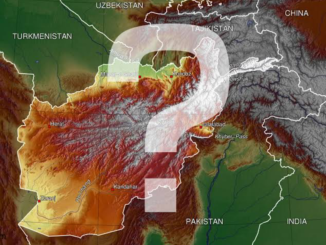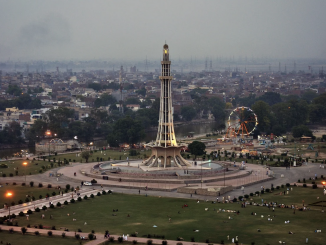On 18th December 2024, the US imposed sanctions on four Pakistani firms accused of their involvement in the development of long-range ballistic missiles widely known as Inter-Continental Ballistic Missiles (ICBMs), adding that the success of this program will allow Pakistan to strike any target outside South Asia, particularly the United States (US). The sanctioned enterprises include the National Development Complex (NDC) in Islamabad and three Karachi-based firms: Akhtar and Sons Private Limited, Affiliates International, and Rockside Enterprise, as reported by the US Department of State.
It is illogical for the US to accuse Pakistan of developing long-range missiles with the intent to target its territory. It might sound surprising for the enemy state leadership that plots against Pakistan; however, it does not make sense to a rational human being. Pakistan’s missile program is explicitly for defense purposes, and officials have never claimed it is intended for targets outside South Asia. The development of the land-based Shaheen-III nuclear-tip missile with a range of 2,750 km provides Pakistan with a strategic deterrent against India – thus nullifying accusations of Pakistan’s ambitions for acquiring long-range missiles.
Adding to that, the intermediate-range Shaheen-III is capable of targeting India’s key sites including its counter-force and counter-value targets. While the acquisition of this capability enhances the country’s strategic posture, the development of the Ababeel medium-range ballistic missile adds another layer to Pakistan’s deterrence against India. The 2,200 km range nuclear-capable missile with multiple independently targetable re-entry vehicle (MIRV) capability is designed to penetrate India’s Ballistic Missile Defense (BMD) systems including S-400, Prithvi Air Defense, and Advanced Air Defense system.
Pakistan has shown very responsible behavior throughout its history, particularly in terms of vertical and horizontal non-proliferation of weapons of mass destruction. Over the past decades, the country’s nuclear profile has been reported as the safest among all the nuclear weapon equipped states. Conversely, numerous incidents of nuclear and radioactive material theft and sale are reported annually in India. Last year, three individuals were arrested in the Indian state of Bihar for possession of 50 grams of radioactive Californium worth $101 million. In response, Pakistan’s Foreign Office spokesperson condemned the incident highlighting the measures taken by New Delhi to prevent the spread of radioactive material.
Similar cases have been reported in other countries as well, since 1993, there have been 419 cases of stolen or smuggled nuclear material. And despite Pakistan facing terrorism and security issues, there has not been a single case of nuclear theft. The country is not a member of or enjoying the privileges of international treaties and agreements such as the Non-Proliferation Treaty (NPT), Missile Technology Control Regime (MTCR) and Hague Code of Conduct (HCoC); however, it strictly performs its duties as a responsible nuclear state. Among the early acquiring nuclear weapon states, Pakistan stands at the lowest with 170 nuclear warheads in its stockpile, lesser than India with 172 according to the latest report.
Similarly, the major P-5 states (US, China, Russia, UK, and France) have far greater numbers of nuclear-tipped missiles with ranges exceeding 5,500 km and even 10,000 km. This compromises the principles of disarmament outlined in the NPT. As the major powers make their way into acquiring advanced military equipment, a conventionally weaker state like Pakistan faces sanctions from the US for the ‘alleged’ development of long-range missiles. But as famously said, “The strong do what it wants, and the weak suffer what it must,” perfectly suits the contemporary global security environment.
The international system is MORE rational than mere rational – allies are assets but interests come first. Pakistan was important to the US for its confrontation in the Afghan War against the former USSR and in the Global War on Terror – but the distance between the two sides increased as their interest decreased. In contrast, the US, in pursuit of its Indo-Pacific strategy started inclining towards India and other regional actors to curb Chinese economic and military influence in the region. Now, being a non-signatory of NPT, India could not get technology from the US, thus the country has taken refuge by joining MTCR and HCoC, which helped it acquire missile defense systems and unmanned aerial vehicles from major powers.
Furthermore, in light of the sanctions, the Pakistani government is reassessing what actions align with the nation’s best interests. The response by the Ministry of Foreign Affairs of Pakistan condemned the sanctions in solid words criticizing the US for its “double standards and discriminatory practices,” adding that “they not only undermine the credibility of non-proliferation regimes but also endanger regional and international peace and security.”
In short, Pakistan has always tried to contain India by developing weapons that could decrease or nullify the conventional asymmetry between the two archrivals. In addition to the development of defensive weapons, Islamabad devised its nuclear doctrine in a way to narrow down any room for aggression by India, specifically by adopting the Full-Spectrum Deterrence (FSD) strategy. This strategy reduces the threshold for the use of tactical nuclear weapons against Indian actions – thus giving tougher time to the military strategists in New Delhi. Whether the US sanctions on Pakistani entities were unilateral or a result of external influence, one thing is indisputable: the enemy does not want the country to stand on its feet!




Be the first to comment